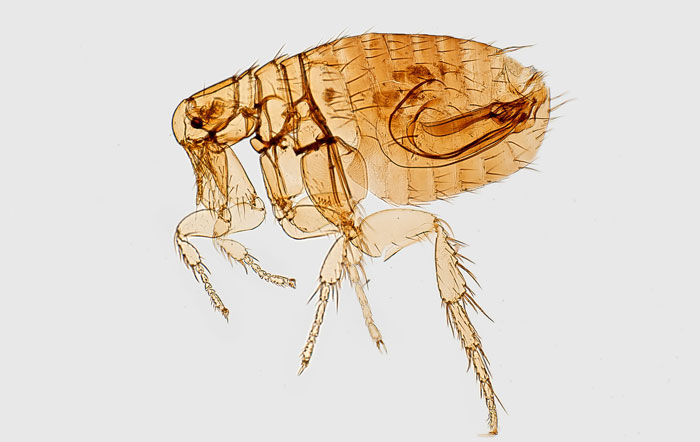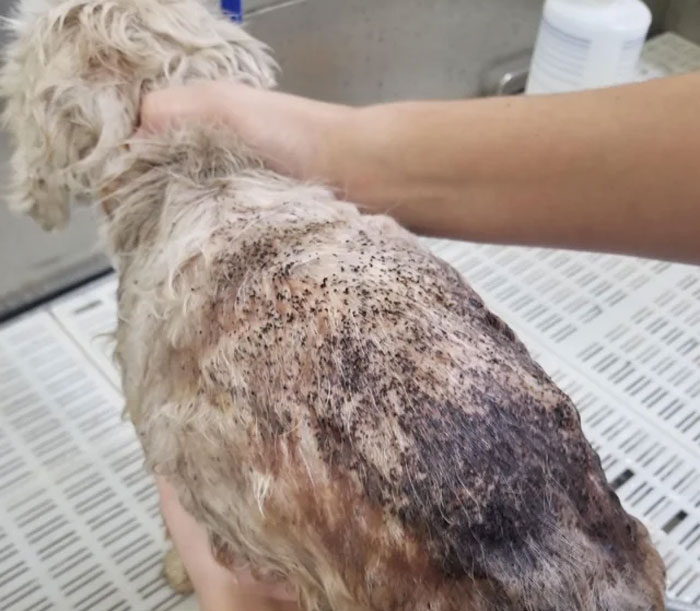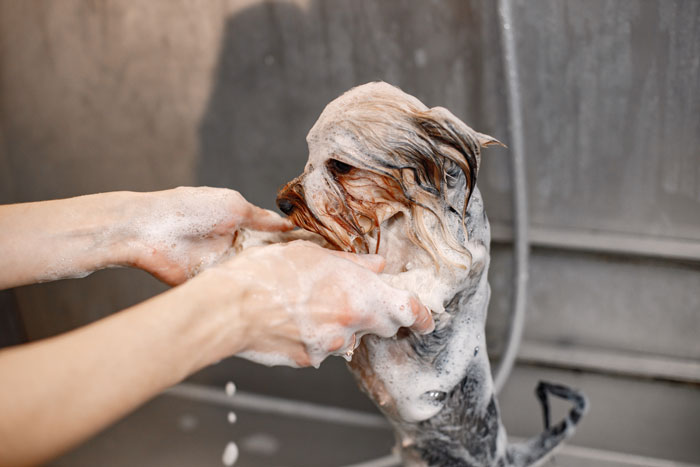Fleas are a huge headache for dog owners, kind of like a sneaky problem you don’t fully see at first glance. Imagine spotting a couple of fleas on your dog and thinking it’s just a small issue. But in reality, just 20 fleas on your pet can quickly become a massive swarm of 200-300 in no time. A study led by The University of Bristol in the UK found some eye-opening stats – about 1 in 4 cats and 1 in 7 dogs have fleas, and to make things worse, around 11 percent of these fleas carry bacteria that could make your dog sick.
- Fleas can quickly turn from a handful to hundreds on pets, escalating infestations.
- Regular flea baths are crucial for dogs' health, happiness, and preventing home infestation.
- A proper flea bath requires specific supplies and methods for effectiveness and safety.
- Preventive measures, like oral medicines and flea collars, are key to keeping dogs flea-free.
This tells us how critical it is to not overlook flea problems but to deal with them properly. A good flea bath isn’t just for pampering – it’s essential for your dog’s health and happiness.
Get ready to un-flea your furry friend and turn bath time into a spa day for your pup! Buckle up, dog lovers, because this guide is about to become your secret weapon against those pesky parasites.
The information provided herein is for informational purposes only. Please refer to our disclaimer for more details..
What Are Fleas?
Fleas are tiny, wingless insects, no bigger than a grain of rice (up to 4 mm long), and they feed on the blood of animals. These pests are found more often in warm places and can live in our warm houses during the cold months, too. Fleas have a really flexible life cycle. Adult fleas can live for a year if conditions are good, and they can go weeks without eating.
They’re also amazing at jumping & able to leap up to 8 to 13 inches – which helps them spread from one pet to another and infest places like beds, carpets, and furniture. There are over 2,500 types of fleas worldwide, but the cat flea (Ctenocephalides felis) is the most common type found on dogs and cats in North America.
Why Do Dogs Require a Bath for Fleas?
Flea baths for dogs are essential due to the unique life cycle and impact of fleas. Just one flea can bite your dog, suck its blood, and then lay lots of eggs in the dog’s fur. These eggs fall off around the house, leading to fleas everywhere. The eggs hatch into larvae, which grow into adult fleas and keep the cycle going, making the problem worse.
Here’s why flea baths are so important:
- Fleas Grow Fast: On average fleas have a lifespan of two to three months. A single female flea can lay about 40 eggs every day. This means a few fleas can turn into a big problem really quickly – filling your home with fleas, their eggs & larvae.
- Health Problems for Dogs: Flea bites make dogs itch like crazy, leading them to scratch, bite, and lick themselves a lot. And this can make their skin even worse, leading to infections. Fleas can also cause dogs to get flea-allergic dermatitis, which makes their skin sore and infected. In really severe cases, fleas can cause dogs to become anemic, a dangerous reduction in red blood cells.
- Risks for People and Other Pets: Fleas can spread diseases to dogs and people, including:
- Tapeworms
- Typhus
- Bartonella
- And Cat Scratch Fever.
There’s even an increase in Plague cases in the USA, which is linked to fleas.
So, giving your dog regular flea baths is a key way to keep them healthy and happy, and to stop your home from getting overrun with fleas. Preventing this issue is typically more manageable & effective compared to tackling a full-blown infestation.
When a Dog Needs a Flea Bath
Deciding when your dog needs a flea bath involves careful observation and understanding the signs of flea infestation. Here’s how you can figure out if it’s time for a flea bath:
- Initial Flea Spotting: If you spot just a flea or two on your dog who’s already on flea control – you might not need to give them a flea bath right away. But, it’s important to keep an eye out.
- Thorough Check: Check your dog’s fur and where they sleep very carefully. Use a flea comb or gently move their fur around, especially on their lower back & near their tail, because these are common hotspots for fleas.
- Identifying Flea Dirt: Fleas leave behind “flea dirt” – these are tiny black bits that are really dried blood. And to see if it’s really flea dirt, put it on a wet paper towel. If it turns a rusty color, that means fleas are around.
- Recognizing Infestation Symptoms: Sometimes, you might not see fleas, but their impact is noticeable. Look for signs like:
- Skin getting red
- Small red bumps
- Intense itching (mainly around their shoulders and neck)
- Restlessness
- Losing hair
- And scabs on their skin
- Decision Time: If you find a lot of fleas or flea dirt, or if your dog is really bothered by fleas, it’s time for a flea bath. This helps get rid of the fleas, makes your dog feel better, and stops fleas from spreading.
Catching fleas early can really help. Doing regular checks and acting quickly at the first sign of fleas can to keep your dog happy and your house free of fleas.
Supplies You Need To Give Your Dog a Flea Bath
Preparing for a flea bath requires specific items to ensure a safe and effective process. Here’s what you need:
- Water Source: You need to have water ready, like a faucet for baths inside or a hose if you’re doing it outside.
- Bathing Basin: For little dogs, a bathtub or sink is fine, but for bigger dogs, you might need a larger tub or basin – especially for outdoor baths.
- Flea Shampoo: Picking the right flea shampoo is super important. Choose one that’s made for dogs. And if you have a puppy, ensure it’s suitable for younger dogs. It’s a good idea to ask your vet for suggestions. Also, check the shampoo’s ingredients to make sure your dog isn’t allergic to anything in it.
- Eye Protection: To keep your dog’s eyes safe from the strong chemicals in the flea shampoo, use some simple eye lubricant or mineral oil.
- Towels: Have a bunch of towels ready to dry your dog after the bath. And you might need more or fewer towels depending on how big your dog is.
- Gloves: Optional but advisable to shield your skin from potential irritation caused by the chemicals in the flea shampoo.
- Leash or Collar: This is especially helpful if you’re giving your dog a bath outside to keep them in place.
So once you’ve got all these things set up, make sure to read the flea dog shampoo bottle for proper usage & dosage. Getting all this ready will help the flea bath go smoothly for you and your dog.
Procedure To Give Your Dog a Flea Bath
Giving your dog a flea bath is crucial for their health and comfort. Here’s a step-by-step guide to effectively administer a flea bath:
- Get Ready: Put your dog in a bathtub or sink and use a towel along the edge to keep water from splashing out. And before you start, put a few drops of mineral oil or eye lubricant in your dog’s eyes. This helps protect them from getting irritated by the flea shampoo.
- Water Temperature: Wet your dog’s fur with water that’s at room temperature or a bit warmer. Make sure it’s not too hot – as that can be uncomfortable or even harmful to your dog.
- Applying Flea Shampoo: Use the right amount of flea shampoo as recommended. Begin at your dog’s neck to stop fleas from escaping to the face, and then rub the shampoo down to the skin, making sure you cover the whole coat. And if there are fleas on your dog’s face, gently use a washcloth or a flea comb to get them off.
- Shampooing Instructions: Look at the shampoo bottle for how long you should leave the shampoo on your dog before rinsing it off. This step is really important for the flea treatment to work.
- Rinse Well: Rinse your dog’s coat with lukewarm water until all the shampoo is gone. It’s important to get all the shampoo out to avoid any skin problems.
- Dry Off: Let your dog shake off the extra water, then use towels to dry them completely. You can use a low-heat setting on a blow dryer if your dog tolerates it. Use a flea comb afterward to pick out any left-over fleas or eggs.
- Repeat if Needed: Sometimes, you might need to give your dog another flea bath in a few days to catch any fleas that weren’t killed the first time.
Remember: While a flea bath helps get rid of the fleas on your dog – it won’t fix a flea problem in your home. To fully get rid of fleas, you also need to clean your dog’s bedding and vacuum your house thoroughly to catch all the fleas.
Tips To Calm Your Dog Before & During a Bath
Making bath time less stressful for your dog, especially when it’s for a flea treatment, is really important. Here are some tips to keep your dog calm before and during their bath:
- Pre-Bath Relaxation: Engage your dog in calming activities before the bath. Take them on a walk where they have to follow commands or do some fun agility exercises. This uses up their energy and helps them feel less anxious. And you can also give your dog a CBD treat before the bath. This can help them associate bath time with positive experiences & reduce anxiety.
- Create a Calming Ambiance: Create a relaxing vibe where you’ll be bathing your dog. Using calming scents like lavender or vanilla can help your dog feel more at ease. Also, talking to your dog in a gentle and reassuring way during the bath can make a big difference.
- Gentle Introduction to Water: Don’t rush or push your dog into the water. Begin by gently getting your dog wet. If you splash water on them suddenly, even if it’s warm – it might scare them. Instead of pouring water over your dog’s head, use a damp cloth to clean their face. Massaging them softly can make the bath nicer for your dog.
- Positive Reinforcement: Give your dog treats to stay calm during the bath. This helps them link bath time to fun treats. A lick pad smeared with something tasty like peanut butter can keep them busy and still.
- Incorporate Play: If your dog has a waterproof toy, bring it into the tub. This can serve as a happy distraction, making the bath more enjoyable for them & easier for them to manage shampooing and rinsing.
- Post-Bath Activities: Doing something fun right after the bath can make your dog start to think of baths as a good thing. This could be playing a game or getting a special treat.
- Regular Routines: Having a regular bath schedule can help your dog get used to the idea and feel more comfortable each time.
Following these steps can help make bath time something your dog might even start to look forward to, or at least not stress about as much.
How To Prevent Fleas on Your Dog
Fleas can be a pesky problem for your furry companion. But with the right prevention strategies, you can keep these tiny pests at bay. Here’s how to safeguard your dog from fleas and ensure their comfort:
- Oral Flea Medicines: Think about giving your dog a flea pill every month. These pills don’t kill adult fleas already on your dog, but they stop new ones from growing – which cuts down on flea numbers.
- Long-Acting Flea Preventatives: For ultimate protection, consider long-acting prescription flea preventatives recommended by veterinarians. These products contain newer, less resistant drugs. And, these are available in topical or oral formulations tailored to your pet’s needs.
- Flea Collars: Flea collars are a good option. For example, the Seresto can work for about eight months. Its success can depend on how many fleas are around your dog area. And make sure the collar touches your dog’s skin. And watch that your dog doesn’t try to chew on it.
- Yard Maintenance: Keeping your yard neat can help keep flea numbers down. If fleas keep coming back, there are treatments for your yard. But be careful, as some can be risky for both pets & people.
- Regular Bathing and Grooming: Washing and combing your dog regularly can stop fleas from settling in and help spot them early if they do show up. Keeping everything clean – your dog, your house, and your yard – is key to keeping fleas away.
By doing these things, you can help keep your dog happy and free from fleas. Talking to your vet can help you pick the best flea control for your dog’s specific needs.
Conclusion
The battle against fleas is an essential aspect of caring for your furry friend. As dog enthusiasts, knowing how to properly give flea baths can really make a difference in our pets’ happiness and health. Fleas are more than just annoying – they can cause health problems for both your dog & your family. So regular flea baths, being on the lookout for fleas early on & preventive care mean you’re taking great care of your dog and keeping your home safe. And as dedicated dog owners, it’s up to us to make sure our pets have the happiest, healthiest lives possible. So let’s work together to keep our dogs free from fleas and filled with joy!

 Image credits:
Image credits:  Image credits:
Image credits:  Image credits:
Image credits: 


-3
0